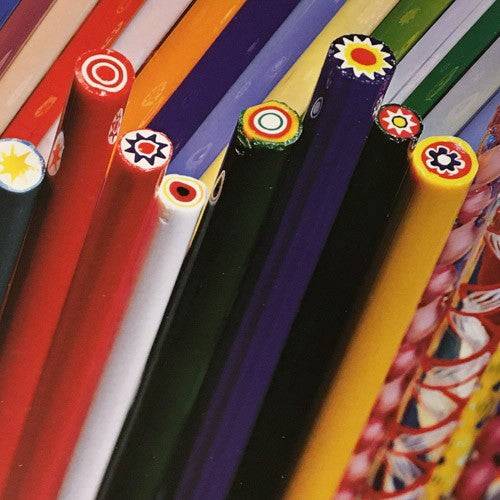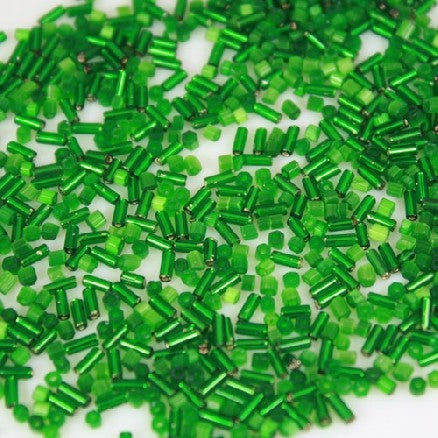It is a long cylindrical glass rod.
It is obtained from a glass bolo that is attached to the two ends and pulled in two opposite directions.
The canna that comes out is placed on wooden strips prepared at regular intervals.
We can define the barrel as a semi-finished product, as it will be cut and included in different products.
Bundles of cane are often fused together and drawn out again to a suitable diameter before being cut into small decorative pieces as millefiori for picking up into paperweights.
They are also cut into lengths and placed against the side of an open mould for picking up onto a gather which is marbled and pulled out to make rods used for opaque twist and filigrana work.
One of the fundamental processes of Murano's glassworks.
A very large numbers of types and applications can be found for this technique, both functional and decorative.
When a layer of coloured glass is superimposed over a base of opaque glass it is possible to obtain numberless variants of colour and thickness in relation to how the molten glass mass is drawn out. Suitably - heated cannas are used in the decoration of vases and figures.
All Murano glass factories have always used them extensively with artistic results that were on occasion quite outstanding, as the tessuto vases designed by Carlo Scarpa .



Leave a comment
All comments are moderated before being published.
This site is protected by hCaptcha and the hCaptcha Privacy Policy and Terms of Service apply.